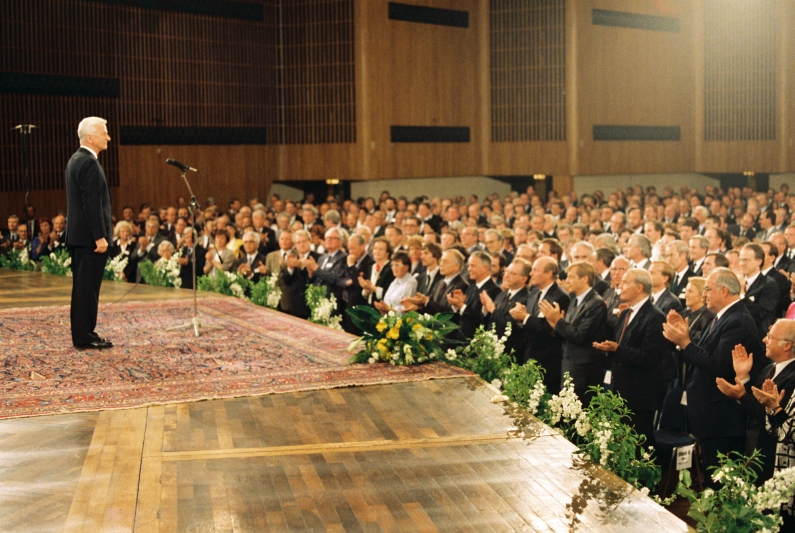In keeping with the policy of détente, on 15 May 1974 the Federal Convention returned to Bonn. The group met in Beethovenhalle, which was also used for concerts, German-press balls, the Federal President’s New Years receptions and for party conventions.
It was in Beethovenhalle that Walter Scheel was elected as Germany’s head of state by the 1,036 members of the Federal Convention in 1974 – followed by Karl Carstens in 1979, and Richard von Weizsäcker in 1984 and again in 1989.
The Federal Convention is composed of members of the Bundestag and an equal number of members elected by the parliaments of the Federal States.
From the standpoint of architectural history, the hall is regarded as an example of an organic architectural concept. Designed by Siegfried Wolske (who studied under Hans Scharoun) and completed in 1959, at the time of the building’s dedication in that same year, shortly before the opening of the Beethoven Festival, the Stuttgarter Zeitung newspaper commented that the building was notable for “a simplicity that is neither exaggerated nor understated. It is moderate, but is surely bound to become a prominent feature in the Bonn cityscape, even if Bonn ultimately loses its status as the capital of Germany.”
